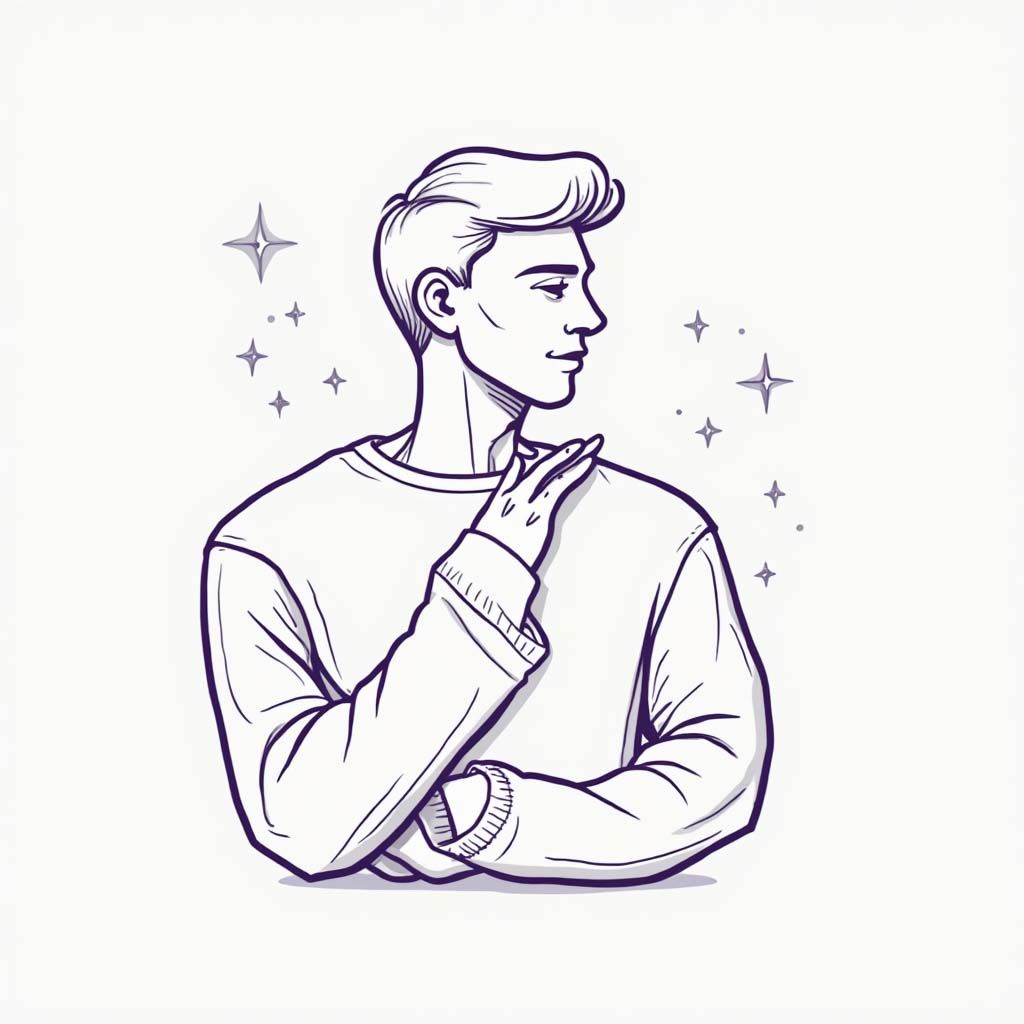
Influencer marketing has transformed the way fashion brands engage with their audience, bridging the gap between traditional advertising and authentic digital storytelling. By leveraging influencers who align with their brand identity, businesses can enhance visibility, foster credibility, and drive conversions. This guide explores key strategies that fashion brands can implement to maximize the impact of influencer marketing.
Importance of Influencer Marketing in Fashion
The fashion industry thrives on aesthetics, trends, and consumer trust. Influencers play a pivotal role in shaping purchasing decisions by offering relatable, aspirational content that resonates with audiences.
Consumer Trust and Authenticity
Modern consumers prioritize authenticity over direct advertising. Research suggests that 63% of shoppers trust influencer recommendations more than traditional brand messages. This trust stems from the genuine connections influencers build with their followers, positioning them as credible sources for fashion advice.
Targeted Audience Reach
Unlike mass-market advertising, influencer marketing enables precise audience targeting. Fashion influencers often cater to niche communities—whether it's sustainable fashion, streetwear, or luxury apparel—allowing brands to engage with highly relevant demographics. This targeted approach improves engagement rates and return on investment (ROI).
Visual Appeal and Content Engagement
Fashion is inherently visual, making platforms like Instagram, TikTok, and Pinterest ideal for influencer-driven campaigns. High-quality visuals, outfit inspiration, and styling videos captivate audiences, increasing brand exposure. Short-form content on TikTok, for example, has led to viral trends that significantly boost product visibility.

Strategies for Effective Influencer Marketing
A well-executed influencer marketing strategy goes beyond sponsorships. Fashion brands must prioritize authenticity, creativity, and long-term collaborations to sustain audience engagement.
Collaborative Campaigns and Co-Branded Collections
Partnerships that extend beyond standard promotions can drive stronger brand loyalty. Co-branded collections, such as H&M’s collaborations with influencers, create exclusivity and encourage direct consumer engagement. Limited-edition product lines designed in collaboration with influencers often sell out quickly, demonstrating the power of authentic partnerships.
Leveraging Micro-Influencers for Higher Engagement
Micro-influencers (10K–100K followers) offer higher engagement rates compared to macro-influencers. Their close-knit communities trust their opinions, leading to more organic interactions. A study by Later suggests that influencers with fewer than 100K followers generate up to 60% higher engagement rates than larger influencers. Fashion brands can maximize impact by working with multiple micro-influencers to expand reach.
Diverse Representation and Inclusivity in Fashion
Consumers expect brands to showcase diversity in their marketing. Partnering with influencers from different backgrounds, body types, and style preferences fosters inclusivity, helping brands connect with a broader audience. Campaigns that reflect real-world diversity enhance relatability and consumer loyalty.
Maximizing Content Variety for Stronger Engagement
A successful influencer strategy incorporates multiple content formats:
-
Outfit Tutorials: Step-by-step guides on styling specific fashion pieces.
-
Behind-the-Scenes Content: Showcasing the design process or brand story.
-
Live Q&As: Real-time engagement, allowing influencers to interact with potential buyers.
-
Trend Challenges: Encouraging user-generated content that boosts campaign reach.
Brands should tailor content strategies based on platform strengths—TikTok for trend-driven videos, Instagram for curated aesthetics, and YouTube for in-depth styling guides.
Utilizing Influencer Feedback to Enhance Brand Strategy
Influencers provide direct consumer insights based on audience interactions. Brands can leverage this feedback to refine product designs, marketing messaging, and campaign strategies. For instance, if an influencer's followers express interest in specific fabric choices or styles, brands can incorporate these preferences into future collections.

Key Tactics for Fashion Influencer Campaigns
Influencer marketing in fashion extends beyond standard brand endorsements. Successful campaigns integrate diverse strategies to maximize reach, engagement, and conversions. Here are key tactics that fashion brands can implement for impactful influencer partnerships.
Affiliate Marketing and Commission-Based Sales
Affiliate programs provide influencers with a unique commission-based incentive to promote fashion products. Instead of flat-rate sponsorship fees, influencers earn a percentage of each sale they drive. This model benefits brands by aligning influencer compensation with performance.
-
Benefit: Encourages influencers to create persuasive content that drives direct conversions.
-
Example: Many fashion retailers use platforms like RewardStyle and ShareASale to track influencer-driven sales and reward commissions accordingly.
Exclusive Discount Codes and Limited Offers
Discount codes linked to specific influencers help track campaign performance while incentivizing purchases. These limited-time offers create urgency, encouraging consumers to act quickly.
-
Benefit: Directly links influencer engagement to measurable conversions.
-
Example: Boohoo frequently collaborates with influencers to offer personalized discount codes, leading to significant spikes in traffic and sales.
Social Media Takeovers for Brand Visibility
Allowing influencers to "take over" a brand’s social media account provides fresh, engaging content while exposing the influencer’s audience to the brand. This strategy is particularly effective for Instagram and TikTok.
-
Benefit: Humanizes the brand by showcasing behind-the-scenes content through a trusted influencer’s perspective.
-
Example: Fashion brands like ASOS have used Instagram takeovers to highlight new collections, styling tips, and live Q&A sessions with influencers.
Interactive Campaigns with Live Q&As and Tutorials
Live content fosters real-time engagement, allowing influencers to answer questions, showcase styling techniques, and provide exclusive insights into fashion products.
-
Benefit: Builds community engagement and deepens trust between brands and potential buyers.
-
Example: Luxury fashion houses, including Dior, have hosted influencer-led live tutorials on makeup and styling, generating immediate audience interaction and increased product interest.
AI and Personalization to Enhance Influencer Engagement
AI-driven tools help brands select influencers with the highest audience alignment and engagement potential. Personalization strategies, such as curated product recommendations based on influencer preferences, enhance campaign authenticity.
-
Benefit: Ensures influencer partnerships are data-driven and highly targeted.
-
Example: Brands like Levi’s have integrated AI-driven personalization into their influencer campaigns, ensuring recommendations resonate with each influencer’s audience

Examples of Successful Influencer Marketing Campaigns
Abercrombie & Fitch – Lifestyle Branding Through Influencers
Campaign Strategy: Collaborated with lifestyle influencers to reposition brand identity. Result: Significant engagement boost on social media and increased sales among Gen Z shoppers.
FabIndia x Komal Pandey – Showcasing Sustainable Fashion
Campaign Strategy: Highlighted traditional Indian craftsmanship through modern styling. Result: Strengthened brand identity and expanded reach within the sustainable fashion community.
Boohoo’s Celebrity Partnerships – Driving Sales Through Star Power
Campaign Strategy: Partnered with celebrities and macro-influencers for mass exposure. Result: Increased online sales and brand recognition among younger consumers.
AJIO x Aashna Shroff – High-Impact Digital Styling Campaigns
Campaign Strategy: Curated seasonal styling tips with a leading fashion influencer. Result: Higher engagement on AJIO’s e-commerce platform and increased purchase intent.
Bata x Kusha Kapila – Connecting Tradition with Modern Influencers
Campaign Strategy: Bridged legacy branding with digital-first content and humor. Result: Renewed brand relevance among younger consumers while maintaining loyalty among existing customers.

Measuring Success in Influencer Marketing
To ensure a strong return on investment (ROI), brands must track performance across key metrics. A data-driven approach helps determine the effectiveness of influencer collaborations and refines future strategies.
Key Performance Metrics: Engagement, Reach, and Conversions
Successful influencer campaigns extend beyond likes and shares. Brands should analyze multiple performance indicators to gauge impact:
-
Engagement Rate: Measures how actively audiences interact with influencer content through likes, comments, and shares.
-
Reach and Impressions: Indicates how many users have seen the content, helping assess brand awareness.
-
Click-Through Rate (CTR): Shows how many viewers clicked on embedded links, leading to website visits.
-
Conversions and Sales: Tracks the number of purchases, sign-ups, or other desired actions resulting from an influencer campaign.
A combination of these metrics offers a comprehensive view of campaign success.
Audience Analysis and Authenticity Verification
Not all influencer engagements translate to meaningful results. Brands must ensure their selected influencers have an authentic audience:
-
Follower Demographics: Aligning influencer audiences with brand target markets improves campaign effectiveness.
-
Engagement Authenticity: A high number of followers with low engagement may indicate fake accounts or purchased followers.
-
Brand Affinity: Influencers who naturally align with a brand’s values create more impactful partnerships.
Verifying these factors prevents wasted budget on influencers who lack genuine influence over their audience.
ROI Tracking: Sales Impact and Brand Awareness Growth
Measuring ROI in influencer marketing involves assessing both direct and indirect outcomes:
-
Direct ROI: Revenue generated from influencer-driven sales, often tracked through affiliate links or unique discount codes.
-
Brand Awareness Growth: A rise in social media followers, website traffic, or product searches following a campaign.
-
Customer Retention: Influencer partnerships that foster brand loyalty can lead to repeat purchases.
Brands should utilize tracking tools like Google Analytics, influencer marketing platforms, and social media insights to quantify these results.
Long-Term Partnerships vs. One-Off Campaigns
Consistent collaborations with influencers often outperform one-time sponsorships. Long-term partnerships:
-
Build credibility, as repeated endorsements strengthen consumer trust.
-
Create ongoing engagement, keeping the brand top-of-mind.
-
Provide better ROI, as long-term ambassadors become deeply integrated with the brand identity.
While one-off campaigns can generate short-term buzz, brands benefit more from cultivating lasting influencer relationships.

Future Trends in Fashion Influencer Marketing
As the digital landscape evolves, new trends shape the way brands leverage influencer marketing. Staying ahead of these developments is crucial for maintaining relevance.
Growth of Virtual Influencers and AI-Powered Campaigns
The rise of virtual influencers—AI-generated personas with highly curated online presences—has introduced a new marketing avenue. These digital influencers offer:
-
Full creative control for brands, eliminating unpredictable influencer behavior.
-
Consistent branding, ensuring aligned messaging across all campaigns.
-
Cost-effective scalability, as AI-driven campaigns reduce dependency on high-profile personalities.
Luxury fashion brands, such as Prada and Balmain, have already experimented with virtual influencers to engage tech-savvy audiences.
TikTok and Short-Form Video Dominance
With TikTok surpassing 1 billion active users, short-form video content continues to dominate influencer marketing. Brands must prioritize:
-
Trend-driven challenges to encourage user participation.
-
Behind-the-scenes content for an authentic brand narrative.
-
Product demos in under 30 seconds, aligning with modern consumer attention spans.
Fashion brands that integrate TikTok into their influencer strategies can capitalize on viral trends and real-time engagement.
Sustainability and Ethical Influencer Collaborations
Consumers increasingly favor brands that align with ethical and sustainable values. Influencer marketing is shifting towards:
-
Sustainable fashion influencers who promote eco-friendly brands.
-
Transparency in collaborations, ensuring authenticity in sponsored content.
-
Minimalist and slow fashion movements, advocating for quality over quantity.
Brands that adopt ethical influencer partnerships enhance their reputation and appeal to socially conscious audiences.
Data-Driven Influencer Selection for Smarter Investments
AI and machine learning tools are transforming influencer selection. Brands now use:
-
Audience sentiment analysis to measure influencer impact.
-
Predictive analytics to forecast campaign performance.
-
Fraud detection algorithms to verify authentic engagement.
By leveraging data-driven insights, fashion brands can maximize ROI and build stronger, more effective influencer partnerships.
FAQ on Influencer Marketing
How do I find influencers to promote my brand?
Use influencer marketing platforms, analyze social media engagement, and check audience demographics to ensure alignment with your brand.
Does Dior use influencer marketing?
Yes, Dior collaborates with fashion influencers, celebrities, and content creators to promote collections through social media campaigns and exclusive events.
Who is the most famous fashion influencer?
Chiara Ferragni is one of the most recognized fashion influencers, known for her luxury collaborations and global presence.
How much do top fashion influencers make?
Top influencers can earn anywhere from $10,000 to $500,000 per sponsored post, depending on their following, engagement, and brand partnerships
25.02.2025
169 article view
Similar articles
29.08.2025
Multi-Platform Influencer Strategies: Maximizing Reach Across All Channels
The digital marketing landscape has transformed dramatically, with influencer marketing emerging as a...
30.05.2025
How to Create An AI Influencer For Free for Instagram
The industry is evolving rapidly, shaped by the growing influence of AI technology. Among the most compelling...
18.04.2025
How to Start Your Own Influencer Marketing Agency
Launching an influencer marketing agency means entering one of the fastest-growing sectors in digital...